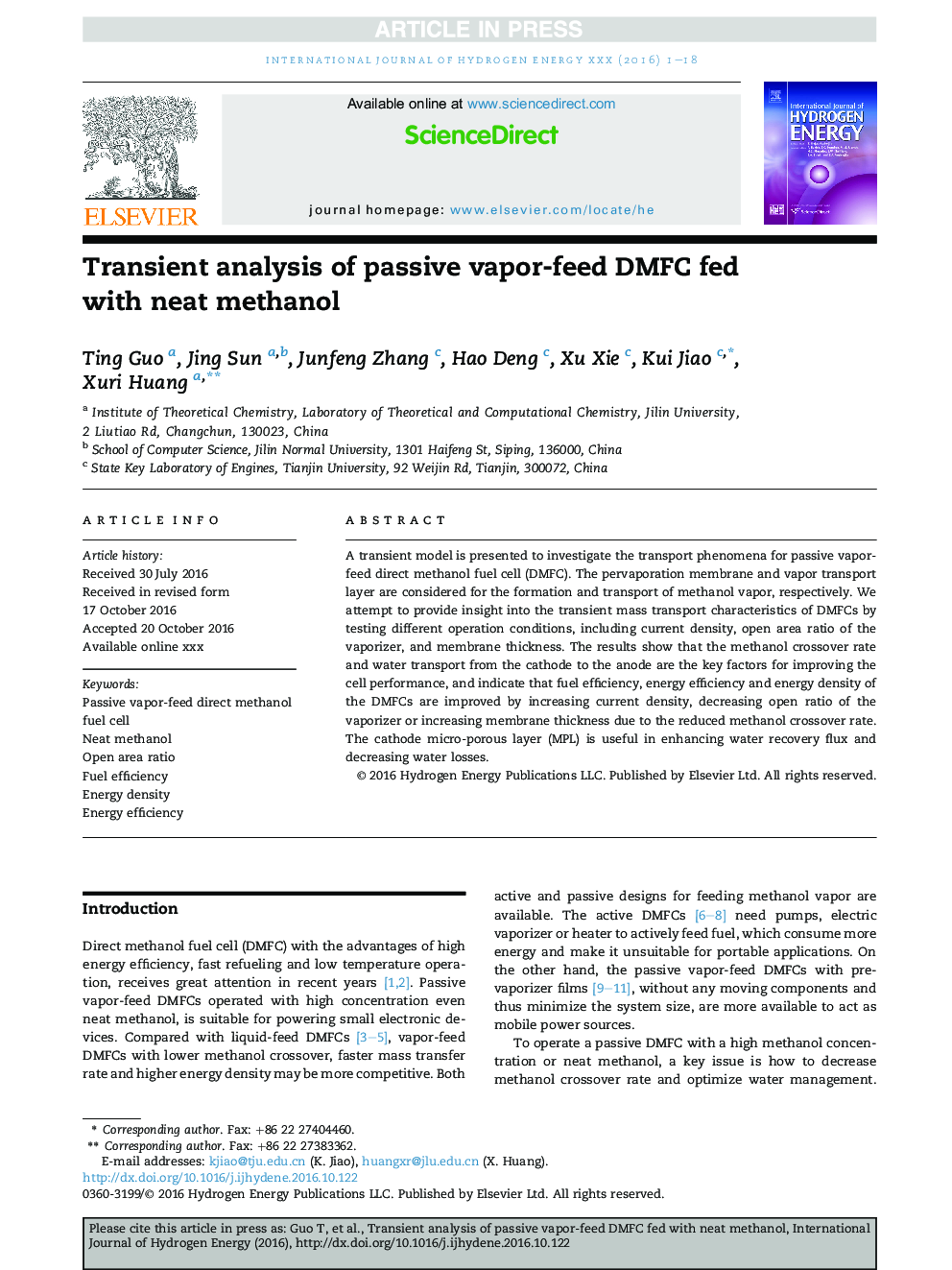| Article ID | Journal | Published Year | Pages | File Type |
|---|---|---|---|---|
| 5148532 | International Journal of Hydrogen Energy | 2017 | 18 Pages |
Abstract
A transient model is presented to investigate the transport phenomena for passive vapor-feed direct methanol fuel cell (DMFC). The pervaporation membrane and vapor transport layer are considered for the formation and transport of methanol vapor, respectively. We attempt to provide insight into the transient mass transport characteristics of DMFCs by testing different operation conditions, including current density, open area ratio of the vaporizer, and membrane thickness. The results show that the methanol crossover rate and water transport from the cathode to the anode are the key factors for improving the cell performance, and indicate that fuel efficiency, energy efficiency and energy density of the DMFCs are improved by increasing current density, decreasing open ratio of the vaporizer or increasing membrane thickness due to the reduced methanol crossover rate. The cathode micro-porous layer (MPL) is useful in enhancing water recovery flux and decreasing water losses.
Related Topics
Physical Sciences and Engineering
Chemistry
Electrochemistry
Authors
Ting Guo, Jing Sun, Junfeng Zhang, Hao Deng, Xu Xie, Kui Jiao, Xuri Huang,
